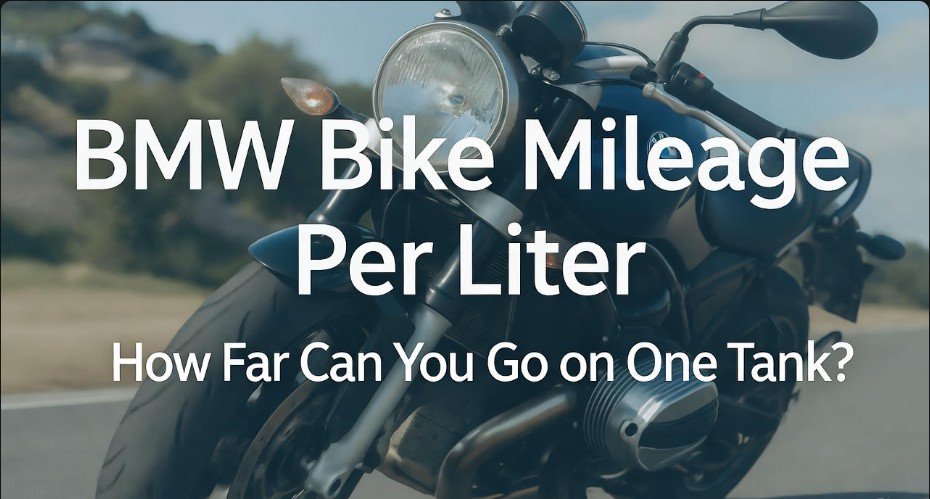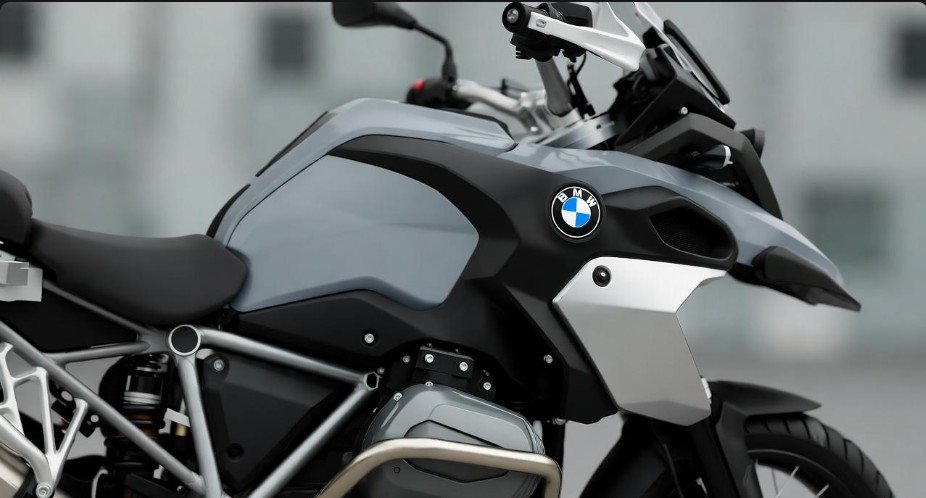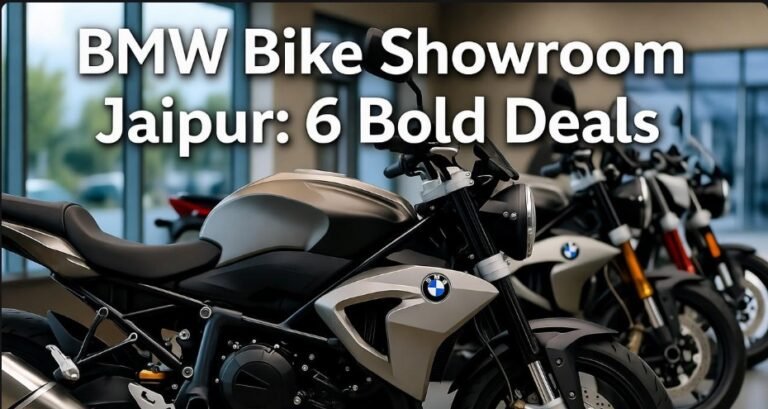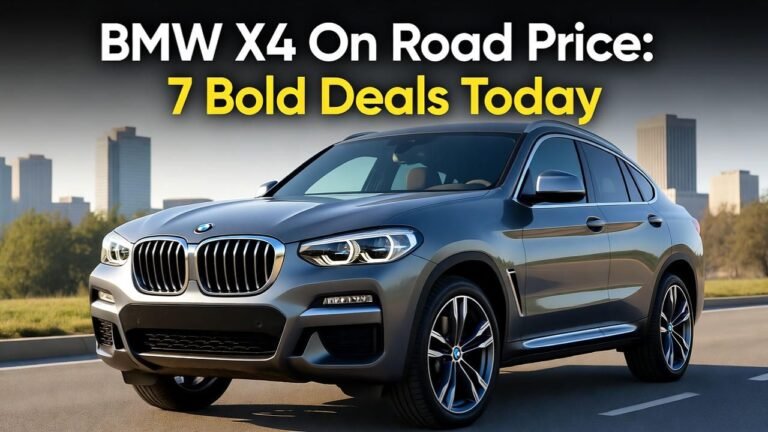BMW Bike Mileage Per Liter: 7 Facts

BMW Bike Mileage Per Liter: 7 Stunning Facts Today
Key Takeaways
Discover BMW motorcycle fuel efficiency.
Understand factors affecting your BMW bike’s mileage.
Learn to improve your BMW motorcycle’s MPG.
Explore common BMW motorcycle models and their mileage.
Find tips for a more economical ride.
Get answers to your top BMW bike mileage questions.
When you’re considering a BMW motorcycle, you’re likely thinking about performance, craftsmanship, and the sheer joy of riding. But one of the most practical questions on your mind might be about fuel efficiency: “What BMW bike mileage per liter can I expect?” It’s a common concern, whether you’re a seasoned rider looking to optimize your journeys or a newcomer to the two-wheeled world. The good news is, understanding your BMW motorcycle’s fuel consumption isn’t as complicated as it might seem. We’ll break down the key factors and provide insights into what makes a BMW bike tick efficiently on the road. Get ready to unlock the secrets to better mileage on your next BMW motorcycle adventure.
Understanding BMW Motorcycle Fuel Economy

BMW motorcycles are renowned for their engineering prowess, blending performance with a surprising degree of efficiency. The term “mileage per liter” is a direct measure of how far your motorcycle can travel on one liter of fuel. This figure, often expressed as kilometers per liter (km/L), is crucial for planning longer trips, budgeting for fuel costs, and even making informed decisions when purchasing a new or used BMW bike. In the United States, while the primary unit for fuel efficiency is miles per gallon (MPG), understanding the liter-based equivalent is essential, especially for those familiar with international standards or when looking at global specifications. The actual mileage you achieve can vary significantly based on numerous factors, from the specific model you ride to your personal riding habits.
7 Stunning Facts About BMW Bike Mileage Per Liter
Let’s dive into the specifics and uncover some fascinating facts about BMW motorcycle fuel economy.
Fact 1: Engine Size and Type Play a Major Role
The heart of any motorcycle is its engine, and for BMW bikes, this is no different. Generally, larger engines require more fuel to operate. A powerful 1200cc boxer-twin engine in a BMW R 1250 GS will consume more fuel per liter than a smaller, more agile 310cc single-cylinder engine found in a BMW G 310 R.
Boxer Engines: BMW’s iconic boxer-twin engines, found in the R-series, are known for their torque and smooth power delivery. While not always the most fuel-sipping, their design often contributes to good overall efficiency for their displacement, especially when ridden moderately.
Inline-Four and Inline-Three Engines: Models like the S 1000 RR (inline-four) or the F 900 XR (inline-three) offer a different balance. They can be very efficient at cruising speeds but will consume more fuel when pushed hard due to their higher revving nature and power output.
Single-Cylinder Engines: The G 310 R and G 310 GS, featuring smaller single-cylinder engines, are designed with fuel economy as a priority. They are excellent for urban commuting and shorter trips where maximizing km/L is a key consideration.
The technology within the engine, such as variable valve timing or advanced fuel injection systems, also significantly influences how efficiently the engine burns fuel. BMW consistently invests in these technologies to optimize performance and economy across its range.
Fact 2: Riding Style is a Huge Determinant
Your right hand on the throttle is one of the biggest influencers of your BMW bike’s mileage per liter. Aggressive riding, characterized by rapid acceleration and hard braking, consumes considerably more fuel than smooth, steady riding.
Aggressive Acceleration: When you twist the throttle hard, the engine demands more fuel to produce power quickly. This can dramatically reduce your km/L.
High-Speed Riding: Riding at consistently high speeds, especially on highways, increases aerodynamic drag and engine load, leading to lower fuel efficiency.
Smooth Riding: Gentle acceleration, anticipating traffic to minimize braking, and maintaining a consistent speed, particularly in the engine’s optimal RPM range, will yield the best mileage per liter.
Think of it like this: you wouldn’t floor the gas pedal in your car every time you moved off, and the same principle applies to your BMW motorcycle.
Fact 3: Terrain and Road Conditions Matter
Where you ride your BMW bike has a direct impact on its fuel consumption. Different terrains and road conditions present unique challenges that affect engine load and, consequently, fuel efficiency.
Hills and Mountains: Riding uphill requires the engine to work harder, demanding more fuel. Conversely, riding downhill can allow the engine to return to a more economical state, or even coast using engine braking.
Urban vs. Highway: City riding often involves frequent stops and starts, traffic lights, and varying speeds, which can lower mileage per liter compared to steady highway cruising. However, very high highway speeds can negate this advantage.
Road Surface: Riding on unpaved or rough surfaces can increase rolling resistance, making the engine work harder and consume more fuel. Smooth asphalt offers the best conditions for fuel economy.
Fact 4: Tire Pressure: The Unsung Hero of Efficiency
Proper tire pressure is a simple yet critical factor that many riders overlook. Underinflated tires create more rolling resistance, forcing the engine to expend extra energy to move the motorcycle forward. This directly translates to lower mileage per liter.
Recommended Pressure: Always refer to your BMW motorcycle’s owner’s manual or the sticker on the swingarm for the manufacturer’s recommended tire pressures. These are usually specified for front and rear tires, often with different values for solo riding versus riding with a passenger or luggage.
Checking Regularly: It’s advisable to check your tire pressure weekly, or at least before every long ride. Tires can lose a small amount of air over time.
Benefits Beyond Mileage: Correct tire pressure not only improves fuel economy but also enhances handling, stability, and tire longevity, ensuring a safer and more enjoyable ride.
According to the U.S. Department of Transportation’s National Highway Traffic Safety Administration (NHTSA), maintaining proper tire inflation is a key aspect of vehicle safety and efficiency. You can find more information on tire safety at https://www.nhtsa.gov/equipment/tires.
Fact 5: Aerodynamics and Load Influence MPG
The shape of your BMW motorcycle and the weight it carries significantly affect how it cuts through the air and how much fuel it burns.
Aerodynamic Drag: A more streamlined motorcycle or a rider in an aerodynamic tuck will experience less air resistance, requiring less power and thus less fuel. Large fairings, while providing wind protection, can also increase drag if not designed efficiently.
Payload: Carrying a passenger, luggage, or heavy accessories increases the overall weight of the motorcycle. A heavier bike requires more energy to accelerate and maintain speed, leading to reduced mileage per liter.
Aftermarket Accessories: While some accessories can improve comfort or utility, others, like large windshields or extra luggage racks, can negatively impact aerodynamics.
Fact 6: Maintenance is Not Optional for Mileage
Regular and thorough maintenance is paramount for keeping your BMW motorcycle running at its peak efficiency. Neglecting maintenance can lead to a gradual decline in fuel economy.
Air Filter: A clogged air filter restricts airflow to the engine, making the fuel mixture richer and less efficient. Regular cleaning or replacement is essential.
Spark Plugs: Worn-out spark plugs can lead to incomplete combustion, wasting fuel. Replacing them according to the service schedule ensures optimal ignition.
Oil Changes: Clean, high-quality engine oil reduces friction between moving parts, allowing the engine to operate more freely and efficiently.
Fuel System: A clean fuel system, free from obstructions or contaminants, ensures the correct amount of fuel is delivered to the engine.
BMW Motorrad recommends following a strict maintenance schedule outlined in your owner’s manual, often detailed in service bulletins available through authorized dealers.
Fact 7: Model-Specific Mileage Varies Greatly
While general principles apply, the actual BMW bike mileage per liter can differ significantly between models. Here’s a look at some popular BMW motorcycle types and the typical range of their fuel efficiency. Note that these are approximate figures and can vary based on the factors discussed above.
| BMW Motorcycle Model Series | Typical Engine Type | Approximate Mileage (km/L) | Approximate Mileage (MPG) | Notes |
| :————————– | :———————– | :————————- | :———————— | :————————————————————- |
| G 310 Series (G 310 R, G 310 GS) | Single-Cylinder | 25 – 35 km/L | 59 – 82 MPG | Excellent for commuting, very fuel-efficient. |
| F Series (F 750 GS, F 850 GS, F 900 R/XR) | Parallel-Twin / Inline-3 | 20 – 28 km/L | 47 – 66 MPG | Balanced performance and economy, versatile. |
| R Series (R 1250 GS, R 1250 RT, R 18) | Boxer-Twin | 16 – 22 km/L | 38 – 52 MPG | Larger displacement, focus on torque and touring comfort. |
| S 1000 Series (S 1000 RR, S 1000 XR) | Inline-Four | 15 – 20 km/L | 35 – 47 MPG | High performance, fuel economy can drop significantly when pushed. |
Note: MPG figures are approximate conversions of km/L for comparison. 1 Liter ≈ 0.264 US Gallons.*
This table illustrates that when you’re looking at BMW bike mileage per liter, the model you choose is a fundamental factor.
Pro Tip: Consider fuel additives that help keep your fuel system clean. They can be particularly beneficial if your BMW motorcycle is stored for extended periods or used primarily for short, stop-and-go city riding.
Maximizing Your BMW Motorcycle’s Fuel Efficiency
Now that you’re aware of the factors influencing mileage, let’s explore practical ways to improve your BMW bike’s fuel economy. Implementing these tips can lead to significant savings and a more enjoyable riding experience.
1. Practice Smooth Throttle Control
As mentioned earlier, your throttle hand is your most powerful tool for fuel efficiency. Instead of abrupt acceleration, focus on smooth, progressive throttle application. Roll on the throttle gradually when starting from a stop or exiting a corner. This allows the engine to build power efficiently without unnecessary fuel enrichment.
2. Maintain Optimal Speed
There’s a sweet spot for speed on every motorcycle where it operates most efficiently. For most BMW bikes, this optimal cruising speed is often between 80-110 km/h (50-70 mph) on the highway, depending on the model. Riding significantly faster increases aerodynamic drag exponentially. Use your bike’s tachometer to keep the engine in its mid-range RPMs, where it’s typically most efficient.
3. Minimize Idling
If you’re stopped for more than a minute, consider turning off your engine, especially in warmer weather. Extended idling wastes fuel without covering any distance. This is particularly relevant in urban environments with frequent traffic lights or when waiting for someone.
4. Plan Your Routes
Before heading out, take a few minutes to plan your route. Opt for routes with fewer traffic lights and less congestion. Sometimes, a slightly longer route on a highway with steady traffic flow can be more fuel-efficient than a shorter route through a busy town. Utilize GPS navigation tools that can help identify the most efficient pathways.
5. Reduce Unnecessary Weight
Before each ride, ask yourself if you need to carry everything. Remove any unnecessary tools, luggage, or accessories that add weight to your BMW motorcycle. Every kilogram removed contributes to better fuel economy and improved handling.
6. Ensure Proper Gear Selection
Riding in too low a gear for your speed requires the engine to work harder and rev higher, consuming more fuel. Conversely, riding in too high a gear can lug the engine, also reducing efficiency. Shifting up as soon as the engine can comfortably handle the load is key. Pay attention to the engine’s sound and feel to select the most appropriate gear for the current speed.
7. Keep Your BMW Bike Tuned Up
A well-maintained motorcycle is an efficient motorcycle. Beyond the essential maintenance items like air filters and spark plugs, ensure your fuel injection system is clean and functioning correctly. Some advanced riders even opt for ECU remapping to optimize fuel-air mixture for better efficiency, though this should only be done by reputable professionals who understand the implications for the engine’s longevity.
BMW Bike Mileage Per Liter FAQ
Here are some frequently asked questions about BMW motorcycle fuel economy that beginners often have:
Q1: What is considered good mileage for a BMW motorcycle?
A1: “Good” mileage is subjective and depends heavily on the model. For smaller bikes like the G 310 R, 25-35 km/L (59-82 MPG) is excellent. For larger touring bikes like the R 1250 RT, 16-20 km/L (38-47 MPG) is considered good for its class and performance capabilities. Always compare within the same model category.
Q2: How does riding with a passenger affect my BMW bike’s mileage per liter?
A2: Riding with a passenger significantly increases the weight the motorcycle needs to move, thus decreasing fuel efficiency. Expect a noticeable reduction in mileage per liter, often in the range of 10-20% or more, depending on the bikes’ capacity and the passenger’s weight.
Q3: Are BMW motorcycles generally more or less fuel-efficient than other brands?
A3: BMW motorcycles are engineered with a strong emphasis on performance and technology. While they may not always top the fuel economy charts compared to smaller, lighter motorcycles from other brands designed purely for economy, they offer a superior blend of performance, comfort, and technology. Their efficiency is generally competitive within their respective classes.
Q4: Can I improve the mileage of my older BMW motorcycle?
A4: Yes, absolutely. Regular maintenance is key: ensure the air filter is clean, spark plugs are in good condition, tires are properly inflated, and the chain is well-lubricated. Riding smoothly and avoiding aggressive acceleration will also make a big difference. For older bikes with carburetors, a proper tune-up can restore lost efficiency.
Q5: Is it true that riding in lower gears uses more fuel?
A5: In general, yes. Riding in too low a gear for your speed means the engine is revving higher than necessary to maintain that speed. This leads to increased fuel consumption. The goal is to keep the engine operating in its most efficient RPM range, which is usually in the mid-range, by shifting to higher gears as soon as appropriate.
Q6: How much difference does wind protection (fairings) make to BMW bike mileage?
A6: Wind protection, like fairings and windshields, can have a complex effect. While they protect the rider from wind blast, potentially allowing for more aerodynamic riding positions and comfort at speed, larger fairings can also increase frontal area and drag. For many touring-oriented BMWs, the net effect at highway speeds is often a slight improvement in efficiency compared to an unfaired bike at the same speed, due to reduced rider drag and more stable airflow.
Q7: Where can I find the exact fuel consumption figures for my specific BMW motorcycle model?
A7: The most accurate source for your specific BMW motorcycle model’s fuel consumption is its owner’s manual. BMW Motorrad also often publishes specifications online for current models. Additionally, reputable motorcycle review sites and forums can provide real-world mileage reports from owners of that particular model.
Conclusion
Understanding your BMW bike mileage per liter is not just about saving money on fuel; it’s about appreciating the engineering and optimizing your riding experience. From the engine size and your riding style to the condition of your tires and the load you carry, numerous factors contribute to how far you can go on a single liter. By implementing the tips discussed—focusing on smooth riding, regular maintenance, and mindful planning—you can significantly enhance your BMW motorcycle’s fuel efficiency. Whether you’re navigating the vibrant streets of New York City or embarking on an epic cross-country adventure, knowledge about your bike’s mileage per liter empowers you to ride smarter, farther, and more economically. Enjoy every mile, knowing you’re getting the most out of your exceptional BMW machine.


